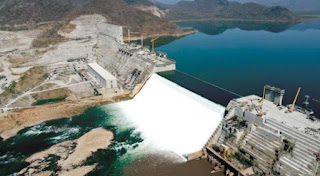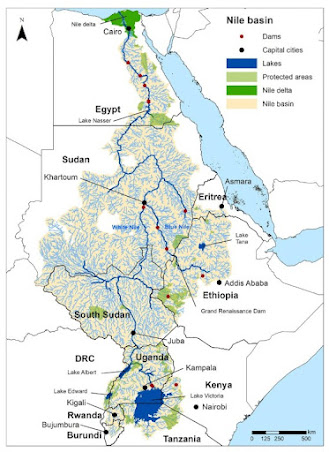The Grand Ethiopian Renaissance Dam: introduction and benefits
The Grand Ethiopian Renaissance Dam (GERD): the biggest hydroelectric project in Africa since its launch in 2011, and the most controversial one as well (Verhoeven, 2021). The GERD is not the only dam on the Nile river, as shown by Figure 1. However, it is the most controversial. Why is that? This post will consider the politics of the GERD, taking a particular focus on the benefits of the dam for Ethiopia, but also the other Nile riparian countries.
The Grand Ethiopian Renaissance Dam, located 45km to the east of the border with Sudan and 750 km northwest of the Ethiopian capital of Addis Ababa, is a hydroelectric dam located on the Blue Nile. It is set to become the largest hydropower plant in Africa (Burck, 2021). This huge project was funded internally, including through selling bonds to the Ethiopian diaspora (Xinhua, 2018).
The GERD started being operational on the 20th of February 2022 (Getachew, 2022) With a capacity of more than 6,000 megawatts, the dam will enable Ethiopia to become a major power exporter, as well as provide electricity to millions of citizens and help lift Ethiopians out of poverty. In addition to this, the country will have the opportunity to sell its hydropower surplus to its neighbours. This will also help Egypt, who primarily uses fossil fuels, as they will have access to a less expensive and less polluting energy supply (Gebreluel, 2014). During the launch of the project in 2011, the Ethiopian Prime Minister Zenawi clearly emphasised that the benefits accrued from the GERD were not restricted to his country, and that the downstream states would stand to profit from the dam as well (Tawfik, 2016). The dam also benefits Sudan and Egypt by "removing silt and sedimentation, by regulating water flow and by conserving water in Ethiopian highlands" (Tesfa, 2013). Concerning sedimentation, the GERD will be able to "capture 90% of the sediment", therefore protecting irrigation canals from being damaged as a result of sedimentation. The regulation of the water flow will help Sudan and Egypt manage their reservoirs better, and eliminate the risk of the High Aswan Dam (HAD dam further downstream in Egypt) overtopping, as well as reducing the annual evaporation losses of the HAD (Embassy of Ethiopia, 2021).




Comments
Post a Comment